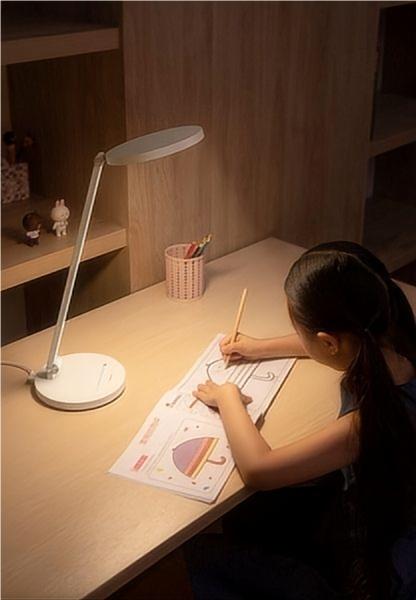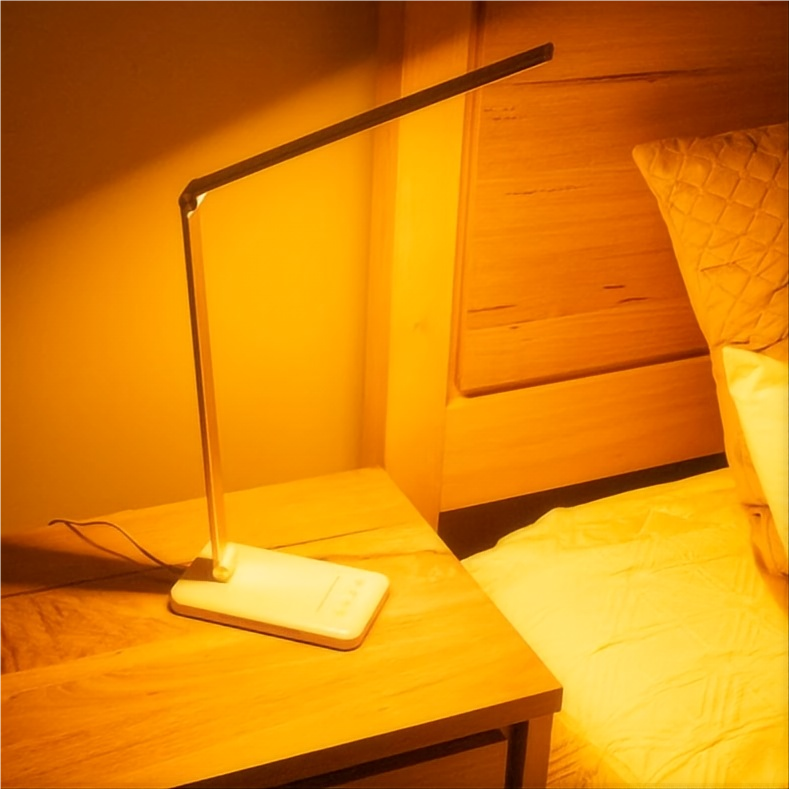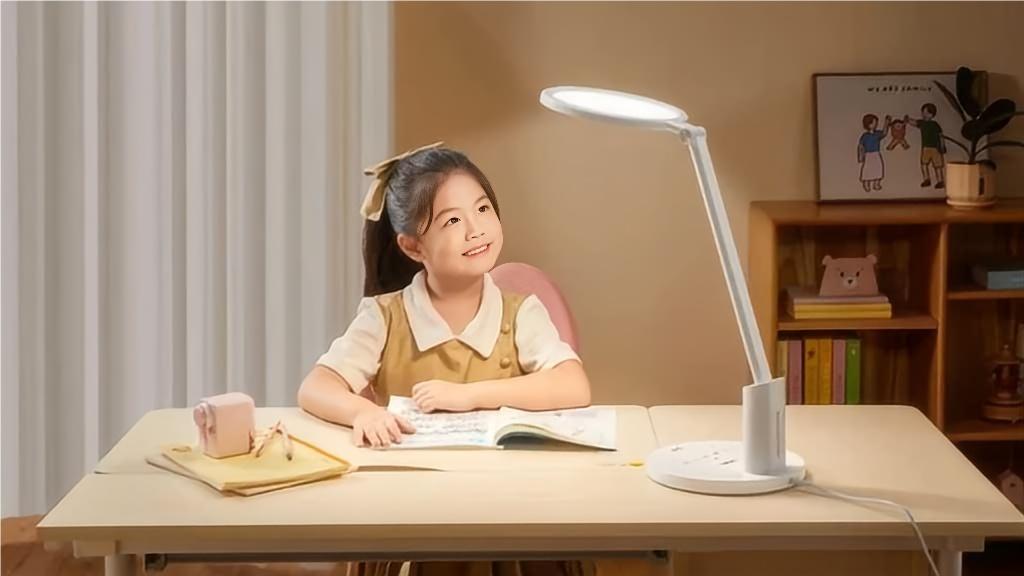The choice of a full-spectrum desk lamp for children is mainly based on its positive impact on vision health, learning efficiency and physiological rhythms. The following are the specific reasons and scientific basis:

1.It is closer to natural light and reduces eye fatigue
Principle: The spectral distribution of full-spectrum lamps is close to that of sunlight, covering the visible light range (380nm-780nm) with a balanced proportion. Especially, it contains the short-wave blue light (beneficial part) and long-wave red light that are lacking in general leds, making the light softer and more continuous.
Advantages: It can effectively reduce the pressure of pupil accommodation, decrease color differences and glare caused by spectral deficiency, and relieve dryness and fatigue caused by prolonged eye use.
Data support: Research shows that the color rendering index (CRI) of full-spectrum lamps is usually over 95 (100 for sunlight), while that of ordinary leds is only around 80. The higher the color rendering index, the more realistic the color of objects becomes, and visual recognition is easier.
2. Reduce the risk of harmful blue light and protect the retina
Misconception Clarification: Full-spectrum does not mean completely free of blue light. Instead, it reduces the proportion of high-energy short-wave blue light at 430-450nm (harmful to the retina) by optimizing the spectrum, while retaining beneficial blue light at 460-480nm (for regulating the biological clock and enhancing attention).
Compared with ordinary leds: Many cheap LED lights, in pursuit of brightness, overly intensify the harmful blue light band. Long-term use may increase the risk of macular degeneration.
3. Stabilize emotions and concentration
Physiological effects: Red and near-infrared light (above 600nm) in the full spectrum can promote mitochondrial activity in cells, improve blood circulation in the eyes, indirectly increase oxygen supply to the brain, and help children maintain concentration.
Psychological effect: Natural light-like illumination can lower the level of cortisol (the stress hormone) and reduce learning anxiety.
4. Regulate the circadian rhythm (biological clock)
Key band: The 480nm blue light in the full spectrum can stimulate retinal ganglion cells and inhibit the secretion of melatonin. Using it during the day can make children more
alert. Lowering the color temperature in the evening (such as switching to 3000K warm light) can help you fall asleep.
Compared with traditional lamps: Ordinary leds lack spectral regulation capabilities and may interfere with sleep patterns.
5. Long-term vision protection
Characteristics of children's eyes: Children's lenses have high transparency, and their penetration rate of short-wave light is more than twice that of adults. The balanced distribution of the full spectrum can reduce the interference of abnormal light signals on the development of the eyeball (such as excessive elongation of the eye axis).
How to choose a full-spectrum lamp suitable for children?
Identify the parameters: CRI≥95, RG0 blue light grade, and the color temperature can be selected as 4000K (neutral white, suitable for study) or 3000K (warm yellow, suitable for bedtime).
Avoid flicker: Choose high-frequency dimming or DC-powered lamps.
When paired with ambient light: Use both a desk lamp and a ceiling lamp simultaneously to avoid shadows caused by a single light source.

Purchase suggestions
Identify the parameters: Select lamps with CRI≥95, adjustable color temperature (4000K-5000K learning mode), no flicker (frequency > 3125Hz), and blue light hazard level RG0.
Brand examples: Professional eye-protecting lamp brands such as BenQ, Berman, and Honeywell all have full-spectrum product lines.
Auxiliary function: Prefer the model with an ambient light sensor, which can automatically adjust the brightness to match the surrounding environment.
Key parameters for selecting full-spectrum lamps
Color rendering Index (CRI) : ≥90 (ideal ≥95)
Color Temperature (CCT) : Wide adjustable range (2700K-6500K)
Blue light grade: RG0 (Harmless Level)
Spectral continuity: No obvious peak loss (compared with the "sawtooth" spectrum of ordinary leds)
Application scenarios

1. Health and medical scenarios
Prevention/Improvement of Seasonal Depression (SAD)
The full-spectrum lamp simulates sunlight and can regulate the secretion of melatonin, alleviating the depression caused by insufficient light in winter.
Hospital/nursing home lighting
Promote the regularity of the patient's biological clock and accelerate recovery; High color rendering index (CRI > 95) helps medical staff accurately observe patients' skin color and wound condition.
Eye-protecting desk lamp (for students/Office Workers)
The low blue light peak design reduces eye fatigue, and the uniform light lowers glare, making it suitable for long periods of reading or working.
2. Professional color working scenarios
Art Studio & Photography Studio
High color rendering index (usually Ra≥95) ensures the true reproduction of pigments, fabrics and artworks' colors, avoiding color deviation from affecting creation.
Quality inspection in the printing/textile industry
Precise color rendering helps identify subtle color differences and improves product quality control.
Museum/Gallery
While protecting the exhibits (reducing ultraviolet/infrared radiation), the true colors of the exhibits are presented.
Summary
The full-spectrum desk lamp, by simulating the spectral characteristics of natural light, provides children with a healthier light environment from a physiological mechanism perspective, especially suitable for students who need to read and write for long periods every day. Although it is more expensive than ordinary desk lamps, considering the long-term benefits to eyesight and learning efficiency, it is a worthwhile health investment.



